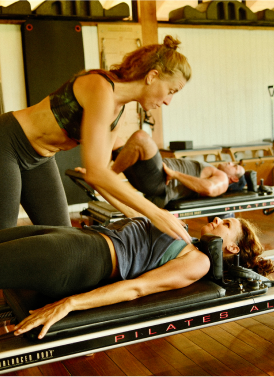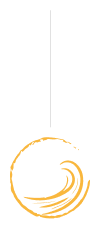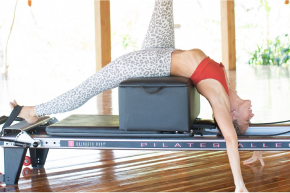You’ve probably heard people say that mat Pilates is only for the super flexible, that it’s too easy to be effective, or that it takes years to see results. These myths stop countless people from ever rolling out a mat.
But here’s the truth: most of what’s said about mat Pilates couldn’t be further from reality. The hesitation usually stems from misunderstanding how powerful and accessible this form of movement really is.
At Pilates Nosara, we see beginners transform every week, from doubting their strength to mastering controlled, graceful movement. If you’ve been on the fence about starting a mat Pilates workout, this guide clears up the biggest misconceptions holding you back and shows why there’s never been a better time to join a Pilates mat class with us.
Let’s Bust Common Mat Pilates Myths
Myth #1: Mat Pilates Is Too Easy to Be Effective
Many assume that mat Pilates exercises are simple stretches or light toning. In reality, a proper mat Pilates workout demands focus, muscle control, and precision. Without relying on machines, your own body weight becomes resistance, which means every move challenges your core, balance, and stability.
In a single Pilates mat class, you’ll engage deep muscle groups that typical workouts overlook. That’s why athletes, dancers, and physical therapists all use mat Pilates to build functional strength. If you are willing to test how strong “simple” can feel? Join a beginner-friendly session at Pilates Nosara and discover how small, mindful movements can deliver big results.
Myth #2: You Need to Be Flexible to Do Pilates
One of the most common fears is, “I’m not flexible enough.” Here’s the truth: mat Pilates doesn’t require flexibility; it develops it. Every stretch and movement is designed to lengthen muscles safely, improving mobility over time.
When you attend your first Pilates mat class at Pilates Nosara, you’ll see people of every age and fitness level moving at their own pace. Our instructors meet you where you are, guiding each posture with alignment cues so your flexibility naturally improves with consistency. Don’t wait to feel flexible enough to start; flexibility is what you’ll gain. Book your first class today and let progress happen on the mat.
Myth #3: Pilates Is Just for Women
Another myth that keeps many from trying mat Pilates is the idea that it’s a “women’s workout.” Joseph Pilates, the founder of the method, created it to strengthen both men and women equally. In fact, soldiers, boxers, and elite male athletes were among his earliest students.
Mat Pilates exercises enhance core stability, posture, and overall athletic performance, benefits that everybody can use. Whether you lift weights, run, or surf, Pilates sharpens control and coordination, making other workouts safer and more efficient. At Pilates Nosara, our classes welcome everyone, men, women, beginners, and pros alike. The only requirement is a willingness to move with intention.
Myth #4: You Need Equipment to Get Results
While reformers and props are great tools, mat Pilates proves that your body itself is the most powerful piece of equipment you’ll ever own. By mastering Pilates mat exercises, you build the foundation needed for every other Pilates discipline. Each move strengthens the deep stabilizing muscles that keep your spine supported and your joints protected.
At Pilates Nosara, we focus on teaching body awareness and control, so whether you’re at home, in a studio, or traveling, your mat Pilates workout goes wherever you go. Start with the mat, master your body, and let everything else follow.
Myth #5: Pilates Is Hard and Intimidating
You might wonder, “Is Pilates hard?” The answer: it’s challenging in the right way. Pilates isn’t about exhaustion; it’s about precision. Every breath and movement serves a purpose, helping you strengthen without strain.
Instructors at Pilates Nosara guide you step by step, ensuring your first Pilates mat class feels approachable and empowering. Within just a few sessions, you’ll notice better posture, deeper core strength, and a calmer mind. Challenge yourself, not with speed or intensity, but with awareness and control. That’s where true transformation begins.
Why Mat Pilates Is the Best Place to Start
For beginners, it’s the perfect gateway to a lifelong wellness routine. At Pilates Nosara, we’ve seen students gain confidence, strength, and clarity, both physically and mentally, through consistent mat practice. Your first class isn’t about perfection; it’s about progress. Our instructors create a welcoming, judgment-free space where every session leaves you feeling better than when you arrived. Starting with mat Pilates gives you the strongest foundation for your fitness journey. Here’s why:
- It’s accessible anywhere, no machines needed.
- It builds body awareness, balance, and mobility.
- It enhances strength safely, reducing the risk of injury.
- It supports every other sport or activity you love.
How To Get Started At Pilates Nosara
Joining a Pilates mat class is easier than you think.
- Step 1: Choose a class level that matches your experience.
- Step 2: Bring comfortable clothing and an open mind.
- Step 3: Arrive early to connect with your instructor and set up your mat.
Our team will guide you through each movement, ensuring you understand technique and alignment before progressing. Whether you want to tone, recover, or simply reconnect with your body, we’ll tailor your experience to your goals. Ready to begin? Book your first mat Pilates workout at Pilates Nosara today, and feel the difference from your very first class.
Final Thoughts
The myths about mat Pilates are easy to believe until you experience the practice yourself. It’s not about being perfect, flexible, or strong from day one; it’s about showing up, breathing deeply, and building strength from the inside out.
At Pilates Nosara, every class is designed to help you move with confidence and mindfulness, supported by world-class instructors and a community that cheers you on. Don’t let outdated myths hold you back. Roll out your mat, take a deep breath, and let your journey toward balance, strength, and self-awareness begin today.
















